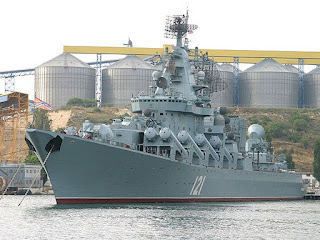For the past two years Russia has been designing a prospective Heavy Nuclear-Powered Aviation Cruiser, which should become one of the most important elements of the country’s national security at sea, a source in the Military-Industrial Commission under the government of the Russian Federation informed journalists. "The Russian Navy needs a futuristic platform, which would be dozens of years ahead of her time, and not just an analogue of modern aircraft carriers existing in the United States or other countries," he noted.
"The main requirement for this ship is its ability to act in all environments: space, air, water, land and underwater", the source emphasized. The Aviation Cruiser is expected to be put to use in the Russian navy in 2020. The new Aircraft Carrier will combine the properties of a command and control vessel and that of a powerful defensive ship. It is also planned to fit up this Aviation Cruiser with the most advanced equipment that has no analogues in the world.
Russian Aircraft Carrier - Admiral Kuznetsov ( Image Courtesy - armyrecognition.com )
The main purpose of such a ship is to deliver strikes at targets in the air, on water, on land and even in space. The latter task will be achieved if the ship works in a tandem with a group of orbital facilities. The Russian navy has 4 subdivisions - thus, it is planned that Russia will have 4 battle groups headed by Aircraft Carriers.” These groups will consist of the Aircraft Carrier itself, at least 6 more other Battle Ships and 1 or 2 Submarines.
The conditions which the commanders have put forward for the new ship is that it should spend a very long time without being reloaded with any energy from outside (it is planned that this will be reached by equipping the ship with nuclear reactors), be workable at any weather and have a high combat viability.
The displacement of the new Aircraft Carrier will be more than 50,000 tons, it will be considerably bigger than “Admiral Kuznetsov” but smaller than its modern US analogues. It will be able to take about 80 airplanes on its deck.
News Courtesy - english.ruvr.ru









